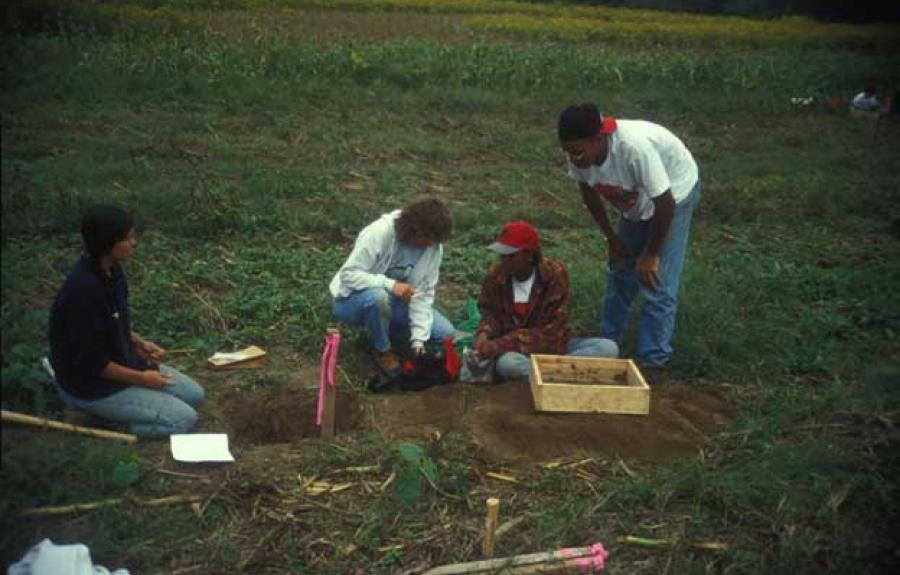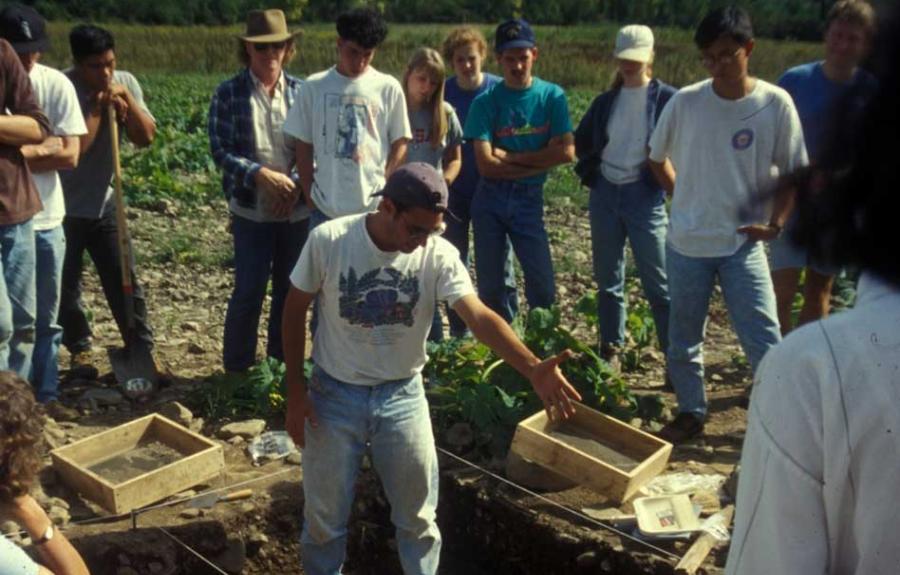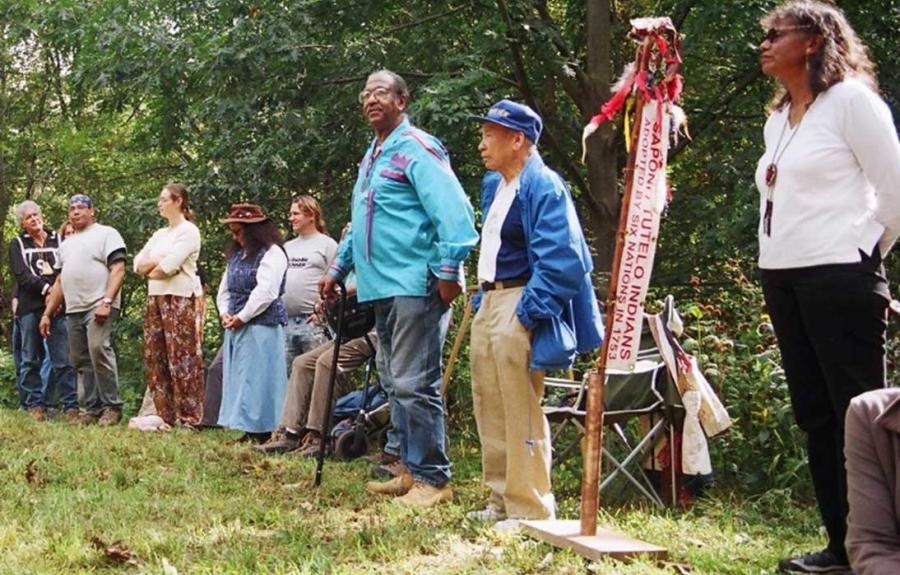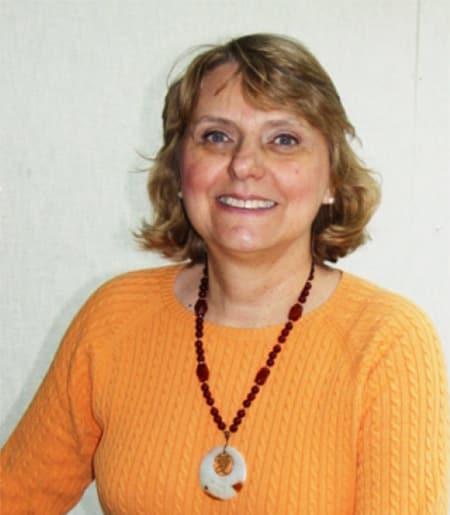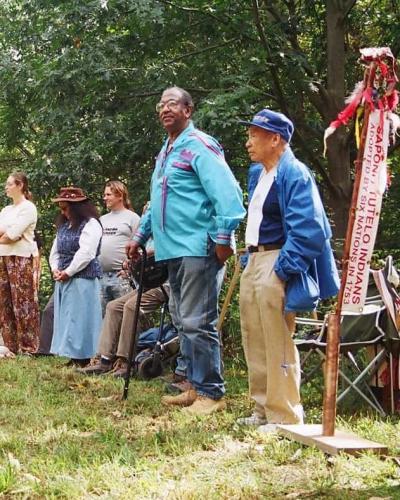Between 1993 and 1997, Sherene Baugher and her students were involved in archaeological service-learning courses involving the survey and excavation of 120 acres of privately held lands in Inlet Valley just south of Ithaca, New York. The property had the archaeological potential of containing the twenty-five houses, farm fields, and orchards of the Tutelo village of Coreorgonel. In 1753, the Gayogo̱hó꞉nǫ's (Cayugas) offered sanctuary to the Tutelos, a displaced Indian nation from Virginia. Coreorgonel was destroyed in 1779 as part of the infamous Sullivan campaign that also destroyed many Gayogo̱hó꞉nǫ' villages. Many Tutelos fled to Canada, where they live on the Six Nations Reserve.
The Inlet Valley project was unique in that it was also completed within the context of a larger land-use planning and decision-making process. Still, the project did not trigger environmental reviews, so we were not in competition with Cultural Resource Management (CRM) firms. The project involved a series of field, lab, and documentary research courses in which the students worked closely with Native Americans, property owners, and town planners, especially assistant town planner George Frantz, now a Professor of Practice in Cornell’s Department of City and Regional Planning. Because the Tutelos are not a federally recognized tribe, the Town of Ithaca required legal engagement with the federally recognized Gayogo̱hó꞉nǫ' since this is Gayogo̱hó꞉nǫ' territory. Chief Frank Bonami represented the Gayogo̱hó꞉nǫ', and Heriberto Dixon, Ph.D., then at the New School for Social Research in New York City, represented Tutelo interests.
Between September 1993 and May 1997, 175 Cornell undergraduate students were involved in the field and laboratory service-learning courses. They were joined by 19 Cornell graduate students and 118 volunteers, including students from Cornell’s American Indian Studies Program (now AIISP). Additionally, 32 Ithaca College students participated in the excavations under the direction of Professor Christopher Poole (1993 and 1994) and Professor Michael Malpass (1995). By the time the project was completed, 747 shovel tests (18 inches in diameter) and 115 excavation units had been excavated. The excavation units were usually 3ft. by 3 ft. but were expanded in size if a feature was encountered.
Members of the Native American community were involved in the excavation in various capacities— as volunteers, registered students, observers, and advisors (Fig 1). For all semesters, individuals and greater Ithaca area community groups were afforded numerous opportunities to tour the site while field excavations were in progress (Fig. 2). Additionally, some visitors could experience archaeological work firsthand on special volunteer days where they worked with student partners.
References:
2020 In Search of the Tutelo Town of Coreorgonel: From Excavation to Creation of a Commemorative Park (Sherene Baugher and George Frantz). The Bulletin, Journal of the New York State Archaeological Association, vol. 134: 1-11
2013 The Inlet Valley Project: Reflections on an Early Model for Interdisciplinary and Cross-Cultural Service-Learning Courses in Landscape Architecture (Sherene Baugher and George Frantz). Landscape Journal 32 (1): 113-130.
Community Service-Learning Courses:
The research undertaken in the Inlet Valley project is part of Prof. Sherene Baugher’s “Community Service-Learning Courses” model. She and her students have been involved in work of this nature since 1993. According to Prof. Baugher, archaeologists have presented archaeology to the public for decades through exhibits, public lectures, books written for the public, and television programs after excavations are completed. However, there has been a shift from presenting archaeology to the public to archaeologists working in collaboration with the public. Archaeologists have become involved in community-based archaeology, such as collaboration with descendant communities on exhibits and heritage projects. A shift has occurred in academic archaeology, with community service learning being integrated into classes where students still learn traditional field and laboratory methodology. Still, service-learning courses all result in tangible end products for local communities. Community members can become involved in different phases of the project or participatory action research; they become involved in all phases of the work, from co-designing the goals of the project to working together to implement the end products, such as exhibits, public lectures, brochures, research reports, and even films. Broadly speaking, ‘participatory action research in archaeology has been a goal within a variety of approaches, including ‘engaged archaeology,’ ‘community-based archaeology,’ ‘value-committed archaeology,’ ‘participatory archaeology,’ ‘participatory culture model,’ ‘community archaeology,’ ‘community heritage,’ and “activist archaeology.’

